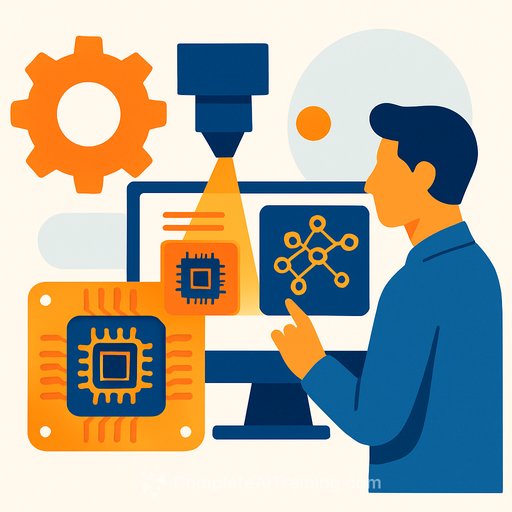Imaging plus AI targets tiny semiconductor defects without destroying the device
WEST LAFAYETTE, Ind. - Defects smaller than a human hair can disrupt steering systems, trigger device failures, and widen security risk. A Purdue-Argonne team is building a faster, nondestructive way to find those defects during manufacturing and flag the ones that actually matter in the field.
Led by Nikhilesh Chawla, Purdue's Ransburg Professor in Materials Engineering, the effort blends high-resolution X-ray imaging with AI to accelerate inspection and improve yield. The goal: shorten feedback loops on packaging lines while preserving the part for continued processing and analysis.
Why this matters
Semiconductor packaging brings multiple chips together into dense, electrically connected systems. As integration increases, so does the risk of defects that escape line-of-sight inspection. Speed and selectivity are the bottlenecks: you need to see more, process more, and act sooner - without grinding production to a halt.
The three-part approach
- See the smallest features: Use X-ray imaging and tomography at the Advanced Photon Source to build a 3D microstructure of packaged devices, then trace defects back to the process step where they likely formed.
- Automate detection: Apply AI to accelerate reconstruction, streamline data processing, and enable automatic defect detection so inspection keeps pace with production.
- Prioritize by risk: Categorize which defect types are most likely to cause field failures, so manufacturing can intercept the right parts at the right time.
"Looking at defects in semiconductors and being able to detect them quickly so that we can help the industry is a very important topic," Chawla said. "We're hoping to accelerate the entire process by using new imaging techniques and faster algorithms."
What's new for manufacturing teams
- Nondestructive snapshots: Replace destructive cross-sectioning with periodic, in-process imaging that preserves the component and shortens failure analysis cycles.
- Higher throughput analytics: AI-driven reconstruction and segmentation reduce operator time and enable scalable, line-ready inspection.
- Actionable quality gates: Linking defect classes to field reliability lets you set tighter, evidence-based screening criteria.
Focus on packaging
The research examines where and how defects arise across packaging phases and which assembly steps are most susceptible. The result is a map of risk across the process flow, guiding targeted interventions rather than blanket slowdowns or rework.
Team and collaboration
- Nikhilesh Chawla (Purdue University), Ransburg Professor in Materials Engineering
- Charles Bouman (Purdue), Showalter Professor of Electrical and Computer Engineering and Biomedical Engineering
- Greg Buzzard (Purdue), Professor of Mathematics
- Hany Abdel-Khalik (Purdue), Professor of Nuclear Engineering
- Francesco de Carlo (Argonne National Laboratory)
- Erdogan Madenci (University of Arizona)
- Martin Gall (GlobalFoundries)
Imaging is performed at the U.S. Department of Energy's Argonne National Laboratory. The work is part of the National Science Foundation's Future of Semiconductors program (FuSe).
Expected outcomes
- Faster root-cause analysis: Backtracking from 3D defect locations to likely formation steps.
- Predictive maintenance inputs: Using imaging data to estimate time-to-failure windows for devices such as phones and laptops.
- Higher yield without scrap: Keep components intact while improving decision quality on rework, repair, or release.
Purdue's broader push
This project sits within Purdue's growing leadership in microelectronics and semiconductors, aligned with computing, physical AI, quantum science, and workforce programs in West Lafayette. Publication of early results is expected as soon as year-end.
For practitioners
- Evaluate nondestructive X-ray tomography as an in-process gate for high-density packages where optical methods stall.
- Pair imaging with AI-based defect classifiers to separate nuisance from high-risk findings and escalate only the latter.
If you're building skills in AI for imaging, defect detection, or manufacturing analytics, explore curated training at Complete AI Training - Latest AI Courses.
Your membership also unlocks:






